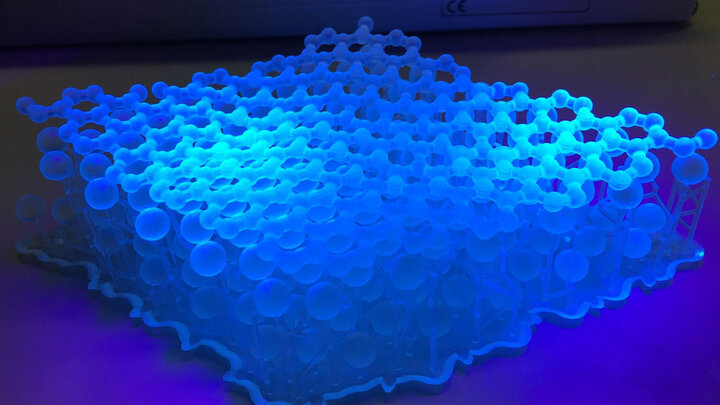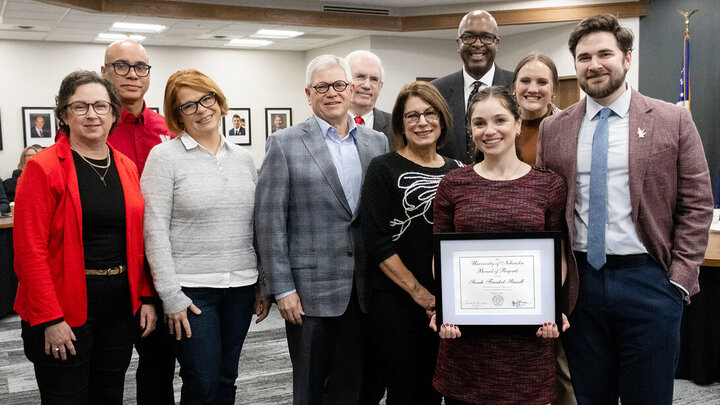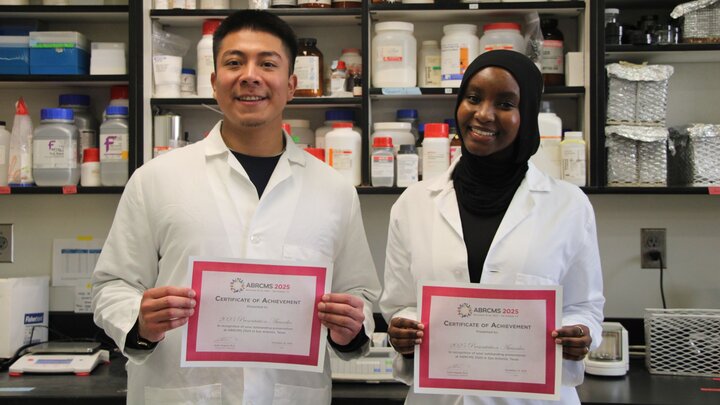Researchers at the University of Nebraska-Lincoln have created a new material that could be the “holy grail” for material physics, according to a researcher who helped discover it.
In a collaborative effort with four other universities worldwide, the Materials Research Science and Engineering Center at Nebraska has discovered a new 2D material. 2D materials are identified by their thickness of one atom, meaning they’re as thin as a material can physically be.
The new material, Monolayer Hexagonal Boron-Carbon-Nitrogen (h-BCN), is similar, but more practical than the breakthrough material graphene.
Graphene was discovered in 2004 by Andre Geim at the University of Manchester in England. According to Graphenea, a private research company specializing in graphene, it’s an extraordinary material that’s between 100 to 300 times stronger than steel and the best known conductor of heat and electricity. It’s also thinner than a sheet of paper and invisible to the naked eye. Geim was awarded the Nobel Prize in Physics in 2010 for its discovery.The only problem is its band gap. A material’s band gap is an energy range that determines how electrons flow through it. Materials such as rubber have a large band gap; electricity does not flow through it. Graphene has no band gap, meaning electricity flows through it uncontrollably, making it useless in modern technology.
h-BCN has a medium band gap, but not as large as rubber or wood.
Sumit Beniwal, a research associate at Nebraska, said h-BCN is composed of boron, carbon and nitrogen atoms. It’s structurally similar to graphene and Hexagonal boron nitride, another 2D material with a much larger band gap.
“Our experimental and theoretical results show that its properties are expected to be in-between that of graphene and boron nitride,” Beniwal said.
According to Nebraska graduate Paulo Costa, the idea for the material comes from marrying the properties of graphene and boron nitride.
“This is the basic concept of our material: mixing boron, nitrogen and carbon together to get a ‘goldilocks effect,’ and get the band gap just right,” Costa said.
According to Costa, this approach has been attempted before but to no avail. He said attempts at mixing the elements of the two materials were random.
h-BCN differs from these other materials in its uniformity, where all of the boron, nitrogen and carbon atoms are equally distributed into an ordered pattern. Costa said in order to do this, the group partnered with chemists who would synthesize the molecules of h-BCN’s three ingredients.
“The hope was to make molecules that would kind of act as individual pieces of a puzzle, which would join at very specific sites to come together to make this flat sheet,” Costa said.
The molecules were placed into a vacuum environment similar to outer space. The molecules would then evaporate onto a heated sheet of iridium metal. As a result, the molecules are broken in certain ways to open and create connections that fit together like a puzzle, Costa said.
Beniwal said his method of discovery is an example of bottom-up growth.
“You start with the smallest building block and with the right set of growth conditions, you can ‘design’ a new material that does not exist in nature,” Beniwal said. “It may not change our understanding of the world, but it is a new material with lots of potential applications.”
Axel Enders, an adjunct professor at Nebraska and a professor at the University of Bayreuth in Germany, said a material like h-BCN is sought after by many scientists. Its structure makes it the perfect candidate for ultrathin technologies.“We expect that this material will have a huge impact,” Enders said. “I expect that many groups will start to research it better to build true 2D electronics from it.”
Beniwal said researchers are already starting to develop technology using 2D materials, such as flexible display screens that can roll like a sheet of paper. Graphene has already shown its ability to act as a super-sensitive pressure sensor when mixed with silly putty, a silicone polymer; it’s even capable of tracking the footsteps of a spider.
Nebraska has collaborated with five other universities for this project, including Boston College, Jagiellonian University in Poland, State University of New York College at Buffalo, Tufts University in Medford, Massachusetts and the University of Bayreuth.
Enders said the Nebraska MRSEC group has collaborated with them for years and has a “strong, interdisciplinary research” track-record.
“Good ideas are sometimes the result of a group of people kicking ideas around,” Enders said. “All of a sudden there is a good idea. I, myself, may not have had it without our current projects and without all others contributing to the discussion.”
The group has published their results in the scientific journal, ACS Nano, and are looking to present them in numerous conferences, including a science workshop at St. Moritz in Switzerland.




